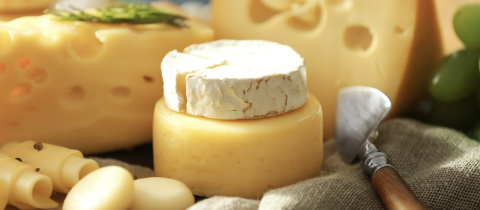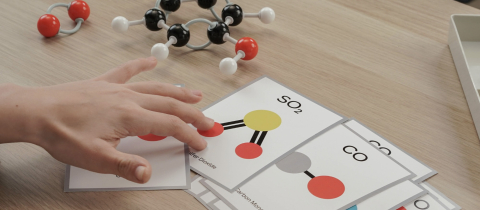What do Gwyneth Paltrow, Kim Kardashian, Adele and Howie Mandel have in common? They don’t “poo.” No, we are not talking about chronic constipation. We are talking about not sham”poo”ing. With Howie, the reason is obvious. When you have no hair, you do not need to shampoo. The other three have become “no-pooers” either because they think shampooing actually makes hair “unhealthy,” or in the case of Gwyneth, because of the belief that shampoo is full of, heaven help us, chemicals.
So if they don’t shampoo, what do they do? Just wash with water, or with a bicarbonate solution followed by vinegar, or they use “dry shampoo.” The usual claim is that the frequent use of shampoo removes the naturally produced sebum from the hair and triggers the formation of more sebum causing the hair to become increasingly more oily. Sounds reasonable, but there is no evidence that this is so. As far as washing with baking soda goes, well, a strongly alkaline solution will remove sebum even more than a shampoo.
There is no scientific reason that hair should be washed every day and if the no-pooers are happy with the way their hair looks and feels, good for them. Most people don’t enjoy greasy hair, so they “poo."
Shampoos do not nourish, revitalize, energize or rejuvenate hair. They can't for the simple reason that hair is not alive. So what do shampoos do? They clean hair. And they do it very well because this is not a difficult task. A variety of detergents will accomplish this very nicely. The more difficult task, as far as manufacturerers are concerned, is to convert a simple detergent solution into a miracle product, at least in the public eye, by dressing it up with ingredients that purport to build body, condition, protect from pollutants, increase shine and repair damage.
Detergents are wonderful cleaning agents. They actually have a dual mechanism of action. First, they reduce the surface tension of water, making it flow more freely. Water with a dissolved detergent will not form beads but will spread easily, wetting every nook and cranny of a surface. Second, detergent molecules form strong ties between oils and water. One end of the molecule is fat soluble and anchors itself in any oily residue. The other end is water soluble. As a consequence, when a detergent solution is rinsed away, the detergent molecules pull any fatty substances away from the surface to which they are attached. Hair is coated with sebum, a natural oily substance which protects the hair from drying out. Unfortunately, sebum is also a magnet for dirt. So cleaning hair mainly involves removing the dirty sebum. The cheapest shampoo will do this as well as the most expensive. In fact, so will dishwashing detergent which contains sodium lauryl sulfate, the active ingredient in most shampoos.
Sodium lauryl sulfate is a great cleaning agent. In fact it is too effective to use alone in shampoos. It strips sebum from hair to a degree that would leave it very dry. And it doesn't suds very well. Not that this has anything to do with cleaning; it doesn't. Hair can be cleaned effectively without any suds. But suds sell shampoos, so foam boosters such as cocamide monoethanolamine are added.
To reduce the drying effect of sodium lauryl sulfate, it is often combined with other less harsh, but generally more expensive detergents such as ammonium laureth sulfate or cocamido propyl betaine. The shampoos designed for permed, colored or damaged hair have a higher proportion of the milder detergents. Some will also include panthenol, a molecule that can diffuse into the hair shaft and bind to proteins, strengthening their structure. Various proteins, starches and synthetic polymers are sometimes added with the idea that they will bind to the surface of the hair to enhance thickness. Results are variable because most of these substances end up being rinsed away with the detergent.
Since people like thick shampoos, thickeners such as xanthan gum are often added. Colors and fragrances can add appeal. Clear solutions can be made opaque by the addition of opacifiers such as cetyl alcohol. Emulsifiers such as glycol distearate are incorporated to assure a homogeneous solution and preservatives (methylchloroisothalizolinone) are added to prevent microbial contamination.
All shampoos, no matter how gentle, face a common problem. As the protective sebum is stripped away, the outside layer of hair, the cuticle is exposed. In healthy hair, this consists of a thin layer of translucent cells which overlap like shingles on a roof. In damaged hair, these shingles are more open and ragged. Adjacent hairs can rub against each other, the resulting friction leads to the transfer of electrons and the production of a static charge. The result is the dreaded affliction of fly-away hair.
All shampoos, no matter how gentle, face a common problem. As the protective sebum is stripped away, the outside layer of hair, the cuticle is exposed. In healthy hair, this consists of a thin layer of translucent cells which overlap like shingles on a roof. In damaged hair, these shingles are more open and ragged. Adjacent hairs can rub against each other, the resulting friction leads to the transfer of electrons and the production of a static charge. The result is the dreaded affliction of fly-away hair.
Ideally, a shampoo should smoothen down the cuticle and cover it with a clean coating of a sebum-like material. The smoothing effect is readily achieved by controlling the acidity of the shampoo. As long as the pH of a shampoo is between 5 and 8, the "shingles" will close down. So all shampoos, whether they make the claim or not, are "pH balanced." The proper pH range is maintained by the addition of so called "buffering agents" such as citric acid.
The replacement of the soiled sebum with a clean protective coating is a more formidable task. After all, how is a shampoo to know that it is supposed to remove one oily substance and leave behind another one? Modern "2 in 1" formulations have gone a long way towards solving this prblem. Silicones, such as dimethicone, are relatively non-greasy materials which resemble sebum. They can coat the hair adding gloss and providing a smooth surface to ease combing. They can also fill in the damaged areas where the cuticle has been worn away.
Through some clever chemistry, techniques have been developed to hold silicones in suspension in a shampoo until the shampoo is rinsed away with a copious amount of water. So during the shampooing process, while the detergent is active, the silicones are held in a sort of suspended state of animatiom. When the shampoo is washed out, the silicones are activated, coat the hair and leave it in good condition. The results can be very satisfying, but still 2 in 1's cannot match the effectiveness of shampooing and conditioning separately.







